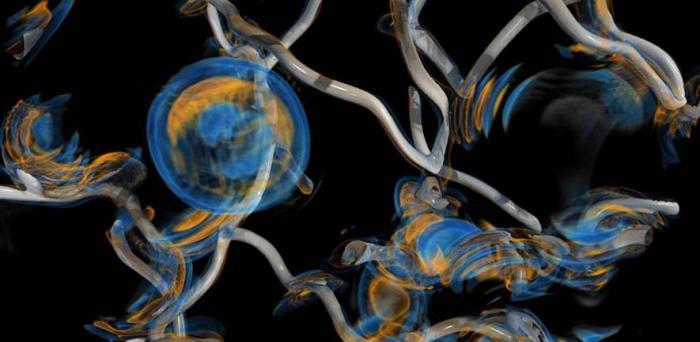The oneAPI Center of Excellence will focus on advancing cosmological research, open-source code development, and in situ compute and visualisation, as well as teaching computational and visualisation coding techniques.
The Centre for Theoretical Cosmology was established by Professor Stephen Hawking in 2007 within the Department of Applied Mathematics and Theoretical Physics. It exists to advance the scientific understanding of our universe, developing and testing mathematical theories for cosmology and black holes.
Over the past six years, Hawking CTC Director Professor Paul Shellard and the COSMOS computing team have collaborated with Intel on developing and optimising several codes with many simulations and visualization results for cosmology study. This includes areas such as the analysis of the Cosmic Microwave Background (CMB), simulations of Einstein’s General Relativity and the creation of gravitational waves during black hole or boson star collisions, and by cosmic string networks.
The COSMOS team, its work and computational and visualisation discoveries together with Intel were documented in the Discovery+ “UNIVERSE UNRAVELED” series currently available in select countries, including the UK.
A major goal of the Hawking CTC is to continue Professor Hawking’s vision of confronting our models of the Universe with the latest observations to reveal deep connections between quantum and galactic scales, while explaining such discoveries in ways understandable by everyone. Hawking recognised that this high-precision data and our complex theories can only touch each other using powerful computers.
“We are honoured to be among the vanguard of institutions chosen to be an Intel oneAPI Center of Excellence, ensuring we build on our longstanding collaboration on in situ visualisation and code modernisation as we prepare to study the Universe at exascale,” said Shellard. “We’re committed to flexible platform-independent programming paradigms so that we can do more with fewer people, focusing on trying out new ideas and new algorithms for our cosmology workflows. The oneAPI development tools offer us a fast pathway on to the widest range of HPC architectures, especially the latest GPU accelerators, so we can respond to the flood of new cosmological data sooner.”
Image: Visualisation of radiation from a cosmic string network created with the help of the Intel oneAPI Rendering Toolkit.
Credit: Amelia Drew (CTC, University of Cambridge) and Carson Brownlee (Intel Advanced Visualisation and Rendering)
Reproduced courtesy of the University of Cambridge
